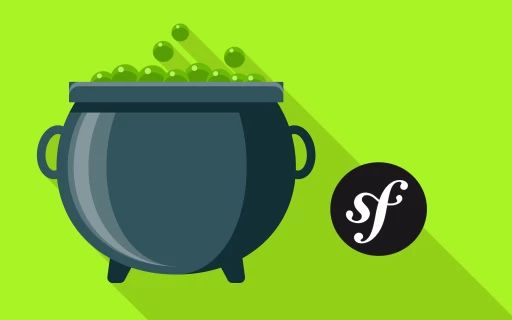Symfony 5 Fundamentals: Services, Config & Environments
Unleash your Symfony 5 potential through in-depth understanding and implementation of services, config & environments.
About this course
This is the tutorial that unlocks your true Symfony 5 potential. How? By talking about what's at the core of Symfony: services, config & environments. These are the tools you'll need to take on any challenge with Symfony:
- Bundles give you services
- Finding and using services
- Configuring bundles (i.e. configuring services)
- Creating your own services
- Autowiring & binding custom arguments
- Symfony Environments
- The magical configuration loading mechanism
- Service parameters
- Environment Variables and .env
- Secrets management
- Having fun with magic & the Logger
- Bonus: The MakerBundle
By the end, you'll see truly understand the fundamentals behind how any part of Symfony works. Need to use a new feature? You'll be ready!
Let's go!
Next courses in the Symfony 5: The Fundamentals section of the Symfony 5 Track!
16 Comments
Bienvenido a SymfonyCasts!
Saludos desde Tepic, Nayarit :)
Hey,
Get comfortable, check your seatbelt and start your journey as soon as you can!!! It should be awesome!
Cheers!
Hi :)
Should i ask how in service class if i have public function A() { return $object } use it in same service class in public function B {} $object from public function A() ???
Hey Mikolaj,
It's a bit fuzzy question, could you provide a bit more complete one? As far as I understand you have:
class Service
{
public function A() {
return $object;
}
public function B() {
$this->A(); // This will return you the $object from A() method
}
}
Or, you can store that object on a class property and call that property instead, but it depends on how you inject/create that $object.
I hope this helps!
Cheers!
Hey Mikolaj,
Great, I'm happy to hear it :) Thanks for confirming it helped!
Cheers!
Hey team! I don't know if it would fit in this tutorial, but a video on the new Rate Limiter component ( https://symfony.com/blog/ne... ) could be really cool! To see how to use it well, on an authentication system, or a simple route from a controller. By exploiting the different possibilities (restrict by IP, by user), see the different ways to store the current number of attempts, etc!
Hey Kiuega
Thank you for your feedback. This tutorial is already finished, so we won't cover that topic here but since the Rate Limiter component is a great component it's likely that we will cover it in a further tutorial.
Cheers!




thnks from Mexico brilliant about the training of fundamentals